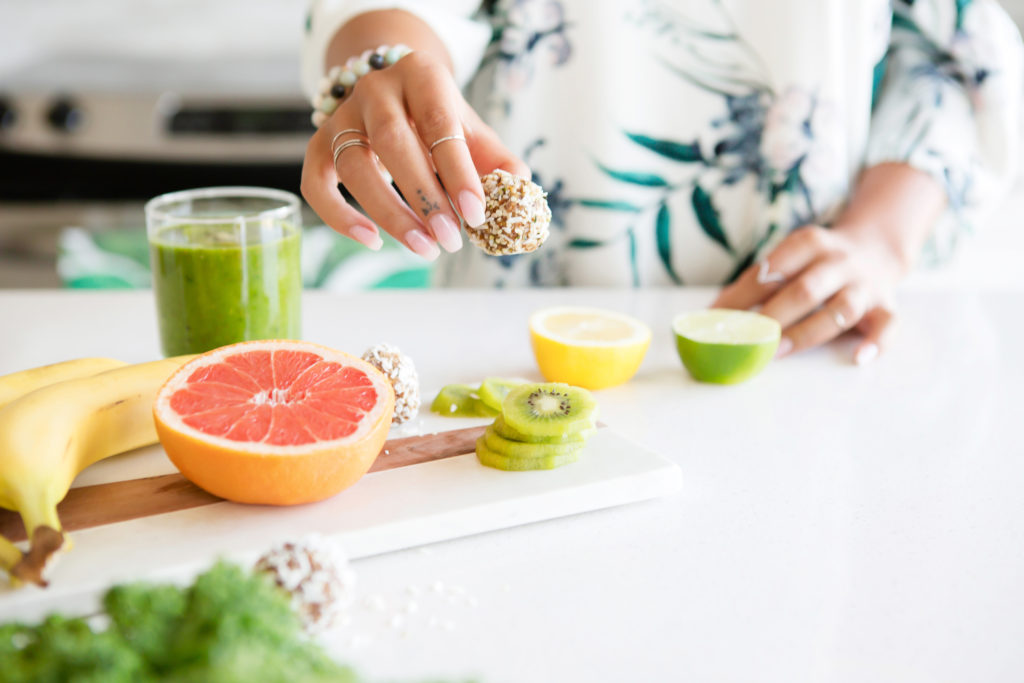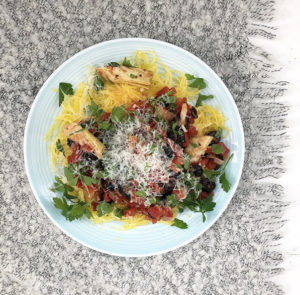
What do avocado toast, Buddha bowls, and cryotherapy have in common? All were big trends in 2017. Want to know what the leading health and wellness trends will be for 2018? Here’s a rundown on what’s hot and what’s about to get hotter throughout the year.
For the past 26 years, Lower Mainland residents have relied upon The Wellness Show as a leader in showcasing the latest, up-and-coming wellness trends every year. This year’s show takes place February 17 and 18 at the Vancouver Convention Centre.
 Activated Charcoal
Activated Charcoal
Food-grade activated charcoal powder made from burnt coconut started popping up everywhere over the last few months. People are adding it to lemonade to create a hangover cure, but it’s been seen in ice cream and even cocktails.
Charcoal is detoxifying; it’s what’s used in water filters to remove toxins and purify it. It can have a similar effect on the body, if taken in the right (small) doses.
Mushroom Lattes
Move over Golden Milk! Next year’s hot beverage is made with mushrooms. Rich in Vitamins A, C, B, D, and E and minerals such as manganese, iron, calcium, zinc, and selenium, medicinal mushrooms like Lion’s Mane and Chaga contain potent anti-bacterial, anti-viral, anti-inflammatory, anti-microbial, anti-fungal, anti-candida, and anti-parasitic properties. It’s been known to boost brain function, and has been used to help Cancer patients. The most popular way to ingest this superfood is via a latte; add a teaspoon of Suro’s Chaga Extract to a cup with 8 ounces of hot water. Add a little cinnamon, sweeten with honey or coconut sugar, and top with some hot coconut milk. The flavor also pairs well with chocolate (Chaga Hot Chocolate anyone?) or Chai.

Intermittent Fasting
While many cultures integrate fasting into their routine as part of their religion, we all know that using fasting as a weight-loss technique is rarely successful in the long term. However, this past year, Intermittent Fasting has become quite popular in wellness circles. The idea is, you do all your eating in a short amount of time during the day, and don’t eat the rest of the day. For most people, this means that they eat all meals in a 6-hour period, and then fast for the other 18. Intermittent fasting is thought to promote stronger insulin sensitivity and increased growth hormone secretion, two keys for weight loss and muscle gain.
 Pardon me, is that seaweed on your face? Sure, we love it in our sushi, and seaweeds like dulse have been eaten for hundreds of years because of their high iron content. It turns out its hydrating qualities are also great to apply topically to your skin, as seaweed has both anti-aging and anti-inflammatory benefits.
Pardon me, is that seaweed on your face? Sure, we love it in our sushi, and seaweeds like dulse have been eaten for hundreds of years because of their high iron content. It turns out its hydrating qualities are also great to apply topically to your skin, as seaweed has both anti-aging and anti-inflammatory benefits.
Local entrepreneur Diane Bernard has been hand-harvesting seaweed from BC’s coast, and has turned it into an organic skincare line called Seaflora.
Nigella Sativa or Black Seed Oil. This ancient seed, which most people have never heard of, is a relative of the cumin or coriander plant. The black seeds are pressed, and the oil is used to treat almost everything from allergies to eczema, to digestive problems, to cancer to heart problems. Just take a teaspoon or two each day to benefit from its phytochemicals.
Ketosis and Personalized Food
Eating well is a personal journey; one diet will not work for everyone. More people than ever, for example, are going vegan. The number of vegans has risen by 360% over the past decade and is expected to continue to soar in 2018.
On the other side of the spectrum, ketogenic diets that emphasize protein and fat (you can still be vegetarian and even vegan on a keto diet) are also growing in popularity. These diets are low-carb, low-sugar, and focus on satiety. Many people report better weight loss, more muscle gain and better energy on these types of keto diets.

And because figuring out the right carb/protein/fat ratio can be tricky, many people are subscribing to personalized meal delivery services like Eat Your Cake (vegan, vegetarian and keto) and meal prep delivery services like Fresh Prep, who deliver everything you need to create a healthy meal in under 30 minutes.
Root to Leaf Cooking
Remember the “nose to tail” movement with meat? The idea was to create as little waste as possible by using as much of the animal as possible. Last year, everyone was all about “ugly” vegetables. This year, it’s about making less waste with your vegetables. Broccoli stalks? Don’t throw those in your organics bin! They’re great in vegetable stocks! Want to learn more about making less waste and Root to Leaf cooking? The Recycling Council of BC will be on hand to answer questions!

For information on all the latest and greatest trends in the health and wellness space, be sure to visit The Wellness Show, February 16 and 17, at the Vancouver Convention Centre.
Guest Post: The Wellness Show